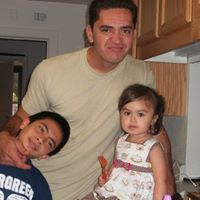Albert D Harmon
Deceased
from Clemson, SC
- Also known as:
-
- Ad D Harmon
- Al D Harmon
- Phone and address:
-
109 Lakeview Cir, Clemson, SC 29631
8646545981
Albert Harmon Phones & Addresses
- 109 Lakeview Cir, Clemson, SC 29631 • 8646545981
Us Patents
-
Textile Spindle Assembly And Method
view source -
US Patent:45437785, Oct 1, 1985
-
Filed:Mar 28, 1983
-
Appl. No.:6/479171
-
Inventors:Ernest Koella - Maryville TN
Albert D. Harmon - Clemson SC -
International Classification:D01H 138
D01H 916 -
US Classification:57303
-
Abstract:The spindle assembly is of the type having a spool upon which coils of strand material are formed preparatory to doffing of a strand package from the assembly. The coils are formed without overlapping them upon one another, and preferably without permitting their transverse engagement and possible mutual attachment. First and second oppositely directed helical grooves are respectively provided upon upper and lower portions of the spool. The first groove prevents overlapping and transverse attachment of the strand material as the coils are formed. Both grooves position strand material at a location favorable to clearance from the spool.
-
Apparatus For Continuously Forming A Continuous Fabric
view source -
US Patent:47906030, Dec 13, 1988
-
Filed:Nov 25, 1987
-
Appl. No.:7/125619
-
Inventors:Albert D. Harmon - Clemson SC
Ernest Koella - Rockford TN -
Assignee:Rockford Manufacturing Company - Rockford TN
-
International Classification:A47L 1320
-
US Classification:300 16
-
Abstract:There is disclosed a mop head sheet-like fabric formed of a plurality of folded and twisted cords on each side of the midline of the fabric which are in side-by-side abutting relation to one another and have looped ends, the cords being bound together by a tape on each side of the midline adjacent to and inward of the looped ends, wherein the tapes have been perforated through with a patterning of needle holes; the fabric may be in a continuous form such as is sheeting and of a prescribed width, being that of approximately twice the length of the constituent cords. The fabric is easily handleable as is sheeting. Further disclosed is a continuous process for forming the present fabric, employing porcupine rollers to control the twisting of the cords and their side-by-side orientation, as well as their taping. Yet further disclosed is an apparatus for carrying out the process employing the aforesaid porcupine rollers.
-
A Continuous Process For Making A Continuous Fabric
view source -
US Patent:47906049, Dec 13, 1988
-
Filed:Nov 25, 1987
-
Appl. No.:7/125393
-
Inventors:Albert D. Harmon - Clemson SC
Ernest Koella - Rockford TN -
Assignee:Rockford Manufacturing Company - Rockford TN
-
International Classification:A47L 1320
-
US Classification:300 21
-
Abstract:There is disclosed a mop head sheet-like fabric formed of a plurality of folded and twisted cords on each side of the midline of the fabric which are in side-by-side abutting relation to one another and have looped ends, the cords being bound together by a tape on each side of the midline adjacent to and inward of the looped ends, wherein the tapes have been perforated through with a patterning of needle holes; the fabric may be in a continuous form such as is sheeting and of a prescribed width, being that of approximately twice the length of the constituent cords. The fabric is easily handleable as is sheeting. Further disclosed is a continuous process for forming the present fabric, employing porcupine rollers to control the twisting of the cords and their side-by-side orientation, as well as their taping. Yet further disclosed is an apparatus for carrying out the process employing the aforesaid porcupine rollers.
-
Shippable, Sheet Like Fabric Useful In Making Mop Heads
view source -
US Patent:47176164, Jan 5, 1988
-
Filed:Feb 26, 1986
-
Appl. No.:6/833828
-
Inventors:Albert D. Harmon - Clemson SC
Ernest Koella - Rockford TN -
Assignee:Rockford Manufacturing Company - Rockford TN
-
International Classification:B32B 300
-
US Classification:428195
-
Abstract:There is disclosed a mop head sheet-like fabric formed of a plurality of folded and twisted cords on each side of the midline of the fabric which are in side-by-side abutting relation to one another and have looped ends, the cords being bound together by a tape on each side of the midline adjacent to and inward of the looped ends, wherein the tapes have been perforated through with a patterning of needle holes; the fabric may be in a continuous form such as is sheeting and of a prescribed width, being that of approximately twice the length of the constituent cords. The fabric is easily handleable as is sheeting. Further disclosed is a continuous process for forming the present fabric, employing porcupine rollers to control the twisting of the cords and their side-by-side orientation, as well as their taping. Yet further disclosed is an apparatus for carrying out the process employing the aforesaid porcupine rollers.
Resumes

Albert Harmon
view sourceLocation:
United States
Flickr
Youtube
Classmates

Albert Harmon
view sourceSchools:
Dentsville High School Columbia SC 1955-1959
Community:
Barbara Hansen, Jordan Dan, Richard Leclerc, Clyde Hess

Albert Harmon | Wyoming C...
view source
Albert Harmon, Lafayette ...
view source
Wyoming Community High Sc...
view sourceGraduates:
Albert Harmon (1963-1967),
Christina Moss (1986-1990),
Felicia Matthews (1996-2000),
Thomas Bray (1978-1982)
Christina Moss (1986-1990),
Felicia Matthews (1996-2000),
Thomas Bray (1978-1982)

Dentsville High School, C...
view sourceGraduates:
Albert Harmon (1955-1959),
Thom Pennington (1961-1965),
Linda Hamby (1964-1968),
Jimmy Koon (1964-1968)
Thom Pennington (1961-1965),
Linda Hamby (1964-1968),
Jimmy Koon (1964-1968)

Albert Harmon
view source
Albert Harmon
view sourceGoogleplus

Albert Harmon

Albert Harmon
Work:
Pimp - The world
Plaxo

Albert Harmon
view sourceMyspace
Get Report for Albert D Harmon from Clemson, SCDeceased















